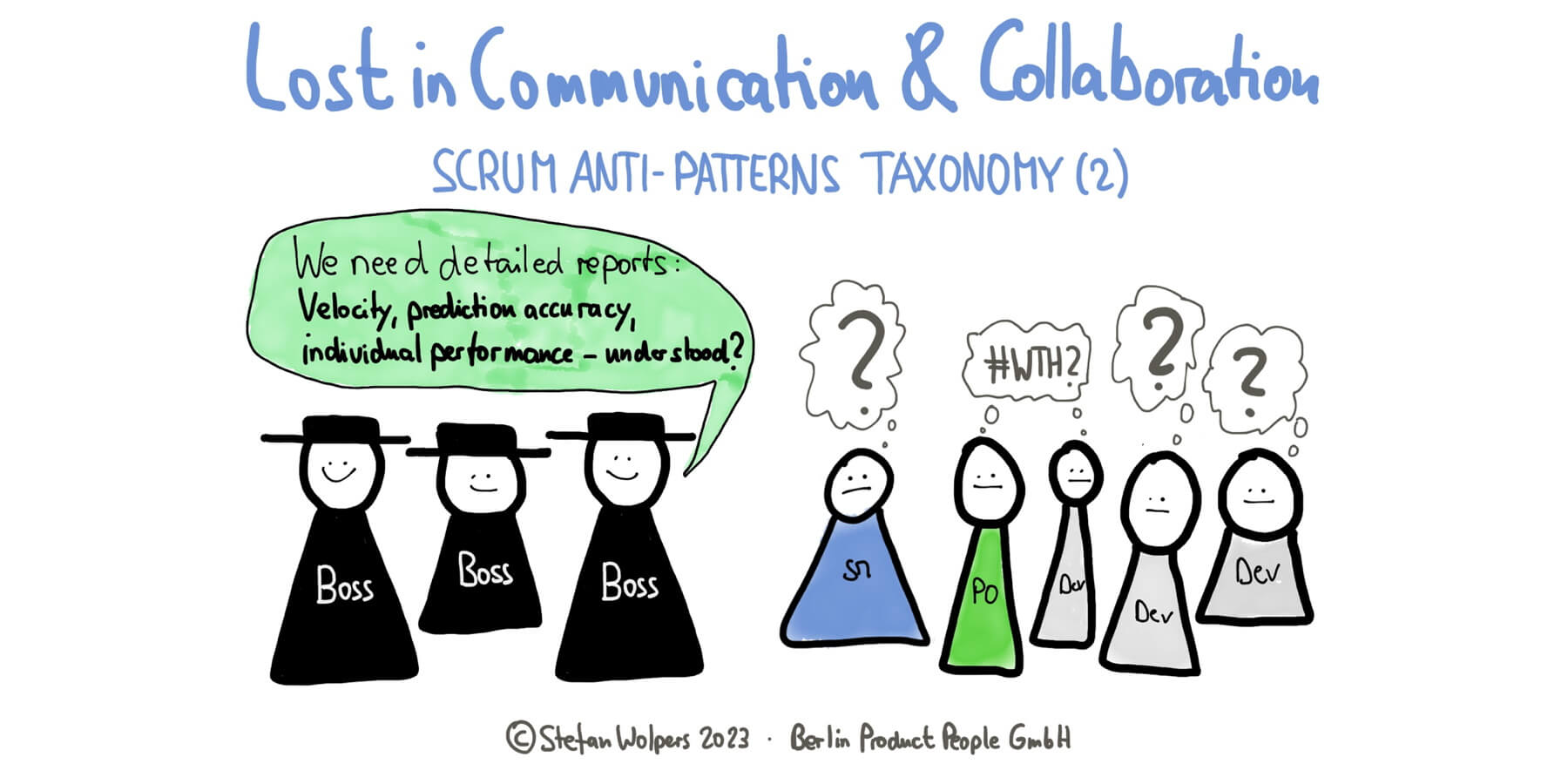Lost in Communication and Collaboration
Learn more about ineffective collaboration at the stakeholder level, often resulting in an unsuited reporting system based on misaligned metrics.
Join the DZone community and get the full member experience.
Join For FreeLost in Communication and Collaboration addresses two categories from the Scrum anti-patterns taxonomy that are closely aligned: ineffective collaboration at the stakeholder level, often resulting in an unsuited reporting system based on misaligned metrics.
Learn how these Scrum anti-patterns categories manifest themselves and how they affect value creation for customers and the organization’s long-term sustainability.
This is the second of three articles analyzing the 183 anti-patterns from the upcoming Scrum Anti-Patterns Guide book. The third article will address failures and breakdowns in planning, process, collaboration, and alignment within the Scrum framework.

Lost in Communication and Collaboration
Let us delve into the two aspects of being lost in communication and collaboration: Ineffective collaboration and stakeholder management and misaligned metrics and reporting:
Ineffective Collaboration and Stakeholder Management
The “Ineffective Collaboration and Stakeholder Management” category underscores failures in collaboration and communication between the Scrum Team and external stakeholders. It highlights the exclusionary reliance on certain team members, unrealistic promises to customers without consultation of the Developers, and inappropriate stakeholder engagement, among other issues. These anti-patterns lead to misunderstandings, hinder effective collaboration, stifle progress and creativity, and obstruct the delivery of value-driven solutions. The category also exposes deep-rooted organizational issues such as avoidance of conflict, mistrust, and hidden agendas, emphasizing the importance of candid communication and open dialogue for alignment and success.
Manifestations:
- Exclusionary reliance on certain team members during Product Backlog refinement.
- Lack of research tasks.
- Lack of leadership support hinders collaboration.
- Restricted customer interaction with Scrum team members.
- Unrealistic sales promises.
- Developers’ tendency to show undone work creates misunderstandings.
- Inappropriately engaged and talkative stakeholders or their disruptive behavior.
- Unengaging presentations at Sprint Reviews hinder progress.
- Complaints, forced participation in Scrum events, and lack of accountability.
- Using the Product Backlog as a mere repository hinders collaboration.
- Mistrust and hidden agendas within the organizational culture.
- Failure to discuss and resolve conflicts or avoid difficult conversations.
- Miscommunication, avoidance of open dialogue, and lack of candid communication lead to team dissonance.
Misaligned Metrics and Reporting
The “Misaligned Metrics and Reporting” anti-patterns category refers to the inconsistencies, errors, and misalignments in metrics, performance measures, planning, and reporting when applying Scrum. Such misalignments often conflict with agile values, leading to an environment that emphasizes the wrong goals, disrupts collaboration, and fosters confusion. It ranges from focusing on individual performance and output over the results of teamwork to issues in planning and estimating, which ultimately hampers the team’s effectiveness and undermines its ability to meet its goals. This category highlights the importance of aligning metrics and reporting with Scrum’s first principles and Scrum Values to ensure proper collaboration, focus, and realization of value.
Manifestations:
- Emphasizing individual performance or output metrics that conflict with teamwork and genuine progress.
- Monetary incentives conflict with intrinsic motivation, reflecting traditional management practices.
- Stakeholders assert budgetary control over feature priorities, disrupting collaboration and alignment with Agile values.
- Misaligning planning, execution, or reporting of capacity and goals, pointing to an inability to gauge capacity accurately.
- Failing to plan, estimate, or report causes mismatched objectives and capabilities, leading to conflicts and inefficiencies.
- Lack of alignment, clarity, and transparency in various aspects of Scrum, leading to misunderstandings, misplaced efforts, and failure to deliver what is expected.
- Confusion and lack of clarity within Scrum artifacts and goals, focusing on output over outcome, diverting the team from realizing value.
Conclusion: Communication and Collaboration
Lost in Communication and Collaboration underscores the intertwined complexities within the Scrum landscape. It highlights collaboration difficulties with stakeholders and the ripple effects they cause, such as misdirected reporting systems, emphasizing the symbiotic relationship between these two Scrum anti-patterns categories.
Published at DZone with permission of Stefan Wolpers, DZone MVB. See the original article here.
Opinions expressed by DZone contributors are their own.

Comments